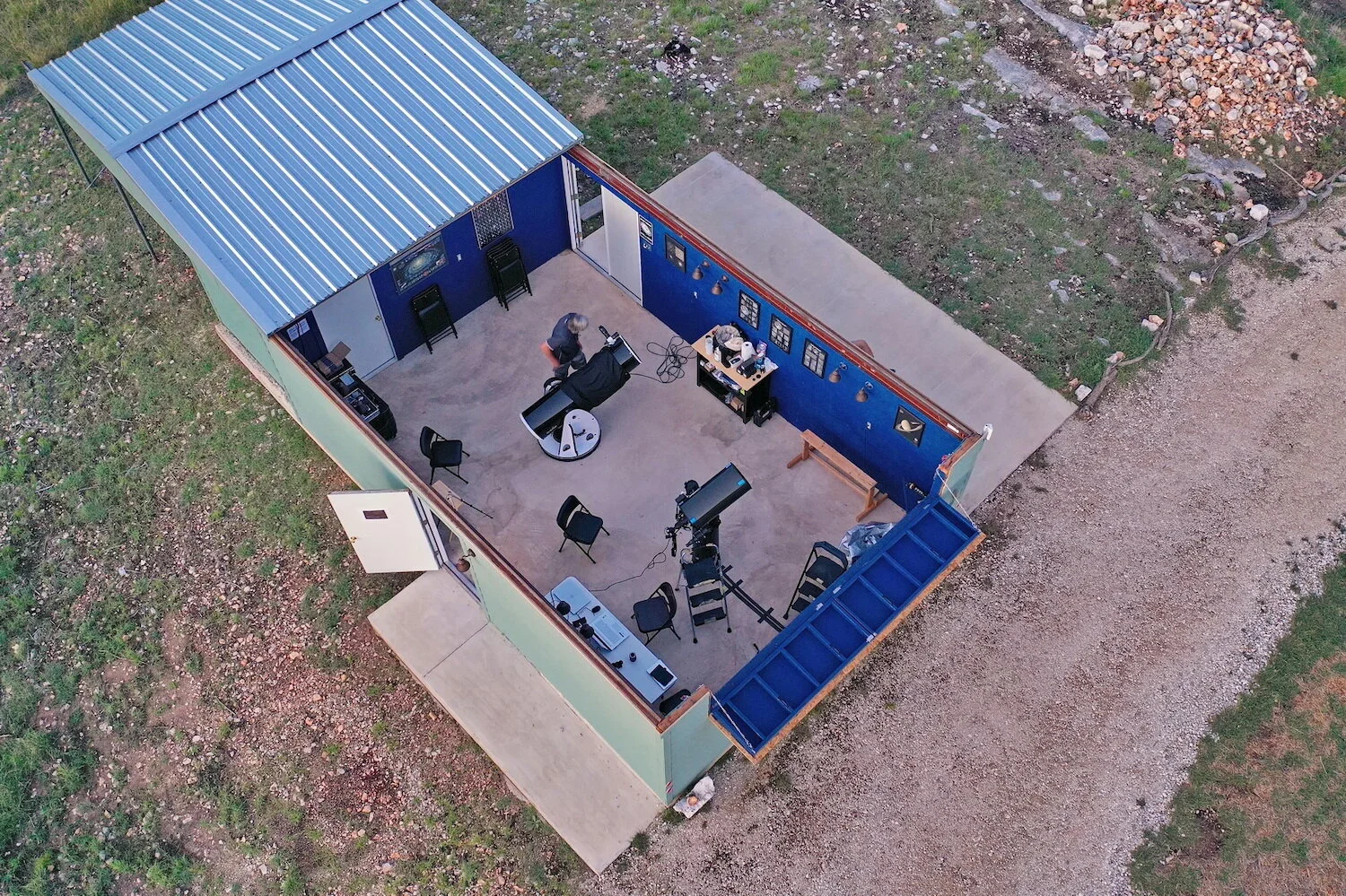Saturn-at-UBarU-PlaneWaveTelescope
The observatory was made possible by a grant generated by a generous benefactor who was impressed by a UBarU exhibit at the March 2017 Texas Night Sky Festival which emphasized UBarU’s designation as an IDA-certified Dark-Sky Park, and how astronomy star-parties were being used as part of our summer youth camp curriculum to teach kids the value in protecting the night skies. Since the benefactor was in charge of an endowment which was created to support youth education, he requested a proposal for the observatory as a means to enhance this educational mission. Shortly afterwards the funding was approved, and the observatory became a reality.
The observatory is located in a light-protected viewing area at the northwest edge of the campus. It features a 16’ x 24’ observing section with a motorized sliding roof which allows exposure to the sky. There is also a 16’ x 8’ temperature-controlled warm-room extension to the viewing area which provides shelter from the elements when needed. It features two high-quality telescopes that are well-equipped for visual use as well as for astrophotography.
The first is a PlaneWave 12.5” CDK mounted on a fixed pier, and the other is a Sky-Watcher 16”, GOTO Dobsonian that is minimally movable within the viewing area. Both telescopes have motorized, GOTO tracking mounts that permit extended viewing or photographing of astronomical objects..
The observatory is in regular use for UBarU events beyond just the summer youth camps, and is available to other youth groups such as from schools, scout troops, and other youth camp centers for supervised, programmed star parties for only a small access fee to UBarU similar to that for Texas state parks (there is no charge to youth groups for the programmed star parties given by us for the group.).
We are eager to show what can be accomplished when someone with a big heart and the means to makes a difference is willing to act with UBarU for the benefit of a common interest.
Here is a link to a video tour of the observatory by John Phelps. https://www.youtube.com/watch?v=PeHqjzINjys&t=5s





